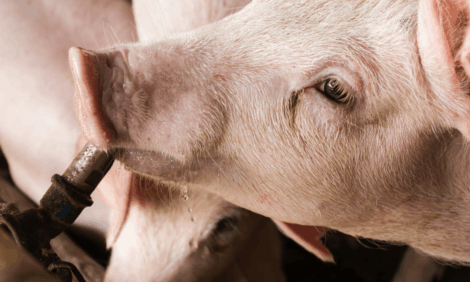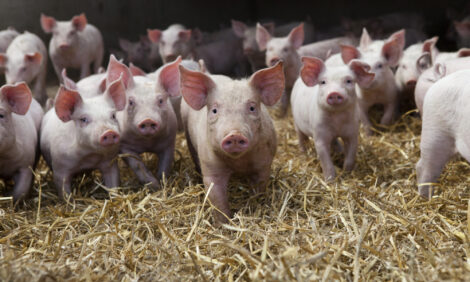



July 2001: Review of the U.S Hog Market
Our Monthly look at the trends in US Hog Market and what effect thes may have on future prices. Inventory Estimates Surprise Trade; Second Quarter 2001 Slaughter Smaller Than Expected; USDA Revises Pig Crop Estimates Downward; Spring Farrowings Below Last Year; Modest Slaughter Increases Projected In Early 2002 - Written by James Mintert, Kansas State University.Inventory Estimates Surprise Trade
The June 1 U.S. hog inventory estimates released by USDA on June 29th were smaller than expected by most people in the trade. Prior to the report, the trade was expecting the hogs and pigs, breeding herd and market hog inventories to all be about 1% larger than a year ago. Instead, USDA reported that the all hogs and pigs and market herd inventories were near a year ago and the June 1 breeding herd was down less than 1% compared to a year ago.
USDA also revised downward several previously released inventory estimates, which helps account for the surprisingly small slaughter this spring. Revised slaughter projections based upon actual slaughter from January-June and these inventory estimates indicate commercial hog slaughter during 2001 will total approximately 97.85 million head, fractionally below last year.
Second Quarter 2001 Slaughter Smaller Than Expected
Slaughter during the April-June 2001 quarter totaled 23.2 million head, just 0.6% larger than a year ago, which compares with a forecasted slaughter increase of about 1.5 to 2%, following the March Hogs and Pigs report. Most of the hog slaughter shortfall occurred during June when average daily slaughter fell 2.5% below a year ago. As expected, weights were heavier than last year which meant that April-June pork production increased about 1.6% compared to spring 2000.
USDA Revises Pig Crop Estimates Downward
The bulk of this summer's slaughter supplies will be drawn from the December-February pig crop. USDA revised downward its estimates of this past winter's farrowings and pig crop when it released the June Hogs and Pigs report on June 29th.Back in March, USDA indicated that winter farrowings increased about 1.4% and the resulting pig crop was 1.5% larger than in 2000. But revised estimates published in the June report indicate winter farrowings increased a mere 1% and the winter pig crop rose slightly more than 1%.
To put in perspective how small the winter pig crop was relative to expectations just six months ago, recall that in December 2000 hog producers reported that they planned to increase winter quarter farrowings by 3.9% compared to the previous year. At any rate, the revised pig crop estimate implies that hog slaughter this summer will range from 24.3 to 24.5 million head, an increase of about 1%, compared to summer 2000.

Spring Farrowings Below Last Year
This fall's hog slaughter will be composed primarily of pigs born this past spring. Back in December, producers indicated they planned to increase the number of sows farrowed this spring by 1% compared to the spring of 2000. And in March hog producers indicated they planned to hold true to that modest growth plan, despite the strength in hog prices this past winter.However, what actually took place, according to USDA's June report, was that instead of increasing farrowings 1% this spring, U.S. hog producers spring farrowings actually fell short of last year's by about 0.25%. As a result, hog slaughter this fall is now forecast to range from about 25.7 to 25.9 million head, near last year's slaughter of 25.8 million head, but a smaller slaughter level than projected following release of the March report. Heavier weights mean this fall's pork production could rise above 2000's, but the increase is likely to be small.
Modest Slaughter Increases Projected In Early 2002
Slaughter will be above a year ago during 2002's first quarter, but the increase will be modest, based upon farrowing intentions reported by USDA. Pigs born this summer will provide the bulk of the hogs slated for slaughter during the first quarter of 2002.
USDA reported that U.S. hog producers plan on farrowing 2.924 million sows this summer, up 1.2% compared to summer 2000's farrowings and virtually unchanged from the initial farrowing intentions reported back in March. If the number of pigs per litter increases modestly as expected, this means commercial hog slaughter next winter will be near 24.8 million hogs, an increase of about 1 to 1.5%, compared to January-March 2001. If hogs are marketed at heavier weights, as seems likely, the year-to-year increase in pork production will wind up near 1.5%.
The projected year-to-year slaughter increase next spring is larger than for next winter, in part because slaughter during the April-June 2001 quarter was surprisingly small. Next spring's slaughter hog supply will come primarily from pigs born this fall.
USDA's June report, which provides the first glimpse of hog producers' fall farrowing intentions, indicated U.S. hog producers intend to farrow 2.905 million sows, a 2% increase compared to fall 2000. But the 2% rise in farrowings could lead to a 4% slaughter increase when compared to this past spring's small slaughter. And given the current level of profitability in U.S. hog production, it would not be surprising if actual farrowings this fall are larger than the farrowing intentions reported on the June report, which could mean an even larger slaughter increase is in the offing.
Pork Trade
Hoof and Mouth Disease (HMD) continued to impact pork trade during April. Total pork imports into the U.S. during April declined 25% below a year ago and pork exports increased 41%. For the year (through April), pork imports were 12% smaller, and pork exports 25% larger, than last year. As a result, net pork exports (exports minus imports) during January-April were up 141% compared to 2000's. The positive trade picture this year has provided a boost to U.S. hog prices by effectively reducing domestic per capita pork supplies.
But the trade outlook is not quite as bright as recent data suggests. Trade restrictions on pork exported from the principal pork exporters in the European Union have been relaxed which means our pork imports from the Netherlands and Denmark will start to pick up from recent depressed levels. Second, some of our recent pork export strength likely came at the expense of European exporters since several major pork importers placed restrictions pork imports from the EU. As a result, look for U.S. exports to soften and imports of pork into the U.S. to pick up this summer and fall, when compared to the January-April pattern.

Hog Prices
USDA's approach to reporting prices under Mandatory Price Reporting makes year-to-year price comparisons difficult. In particular, USDA discontinued releasing weighted average prices for the Iowa-S. Minnesota market, instead choosing only to release weighted average base prices for that and other markets. The fact that weighted average base prices for prior years are not available makes year-to-year comparisons tenuous.Given that limitation, estimates of weighted average carcass weight barrow and gilt prices in the Iowa-S. Minnesota market indicate it averaged $70 per cwt. during April-June 2001, close to last year's estimated average of $69.65 per cwt., but 9.5% above the spring quarter's five-year average.
Last summer (July-September), Iowa-S. Minnesota estimated carcass weight barrow and gilt prices averaged near $63 per cwt. Although prices in early July will be in the mid-$70's, it looks like the July-September IA-S. MN barrow and gilt price average will wind up in the mid $60's, if demand for pork products, especially pork bellies, remains strong.
Barrow and gilt prices are expected to weaken seasonally this fall, however, and average in the middle to high $50's (carcass weight), above both last fall's estimated average of $53.60 per cwt. and the five-year fall quarter average of $52.87 per cwt. Winter 2002 barrow and gilt prices are likely to drop below both fall 2001 and the previous year's level.

During the first quarter of 2001, IA-S. MN barrows and gilts averaged $57.40 per cwt., but in 2002 prices are expected to average in the low to mid-$50's. Spring quarter 2002 prices will rise seasonally above winter quarter prices, but are expected to fall well below this year's $70 average. If slaughter increases about 4% compared to spring 2001, look for IA-S. MN barrow and gilt carcass weight prices to average in the low to mid-$60's.
Futures Based Cash Price Forecasts
Futures prices, adjusted for basis expectations, are a source of continuously updated cash price forecasts. As an example, Western Corn Belt 51-52% lean barrow and gilt price forecasts based upon futures prices at the time of this writing (7/5/01 settlement prices) adjusted for basis expectations are included in a graphical format. Basis forecasts are based upon the most recent three-year average basis for 51-52% lean barrows and gilts. To provide some indication of the amount of risk present, forecasts based upon the most positive and negative basis of the last three years are also included.Weekly updates (in graphical form) of these price forecasts are also available on the K-State Livestock & Meat Marketing Web Site (www.agecon.ksu.edu/livestock) in the weekly electronic publication entitled Hog Price & Supply Graphs.

Information provided by KSU Livestock report. For more information visit the KSU Livestock website.
Reproduced with permission.








